As I walk across what I initially assume are some rocks, but are in fact countless petrified cadavers, I use the scavenged head of a cyborg to scan my surroundings. Amid the sea of neutral green are two red silhouettes lying still on the ground—not corpses, but cyborgs with their legs blown off, yet still active and deadly. They can't see us, as we're hidden behind towers of gore and bone. We sensibly head in the opposite direction.
In The Forever Winter, letting rip with the game's myriad firearms is often the very last thing you'll do before an army of machines and soldiers descends upon you. "One important rule is: don't shoot unless you have to," design director Jeff Gregg warns me as we sneak through rows of tombstones. It's like "ringing the dinner bell". But my AK-47 will still see some use very soon.
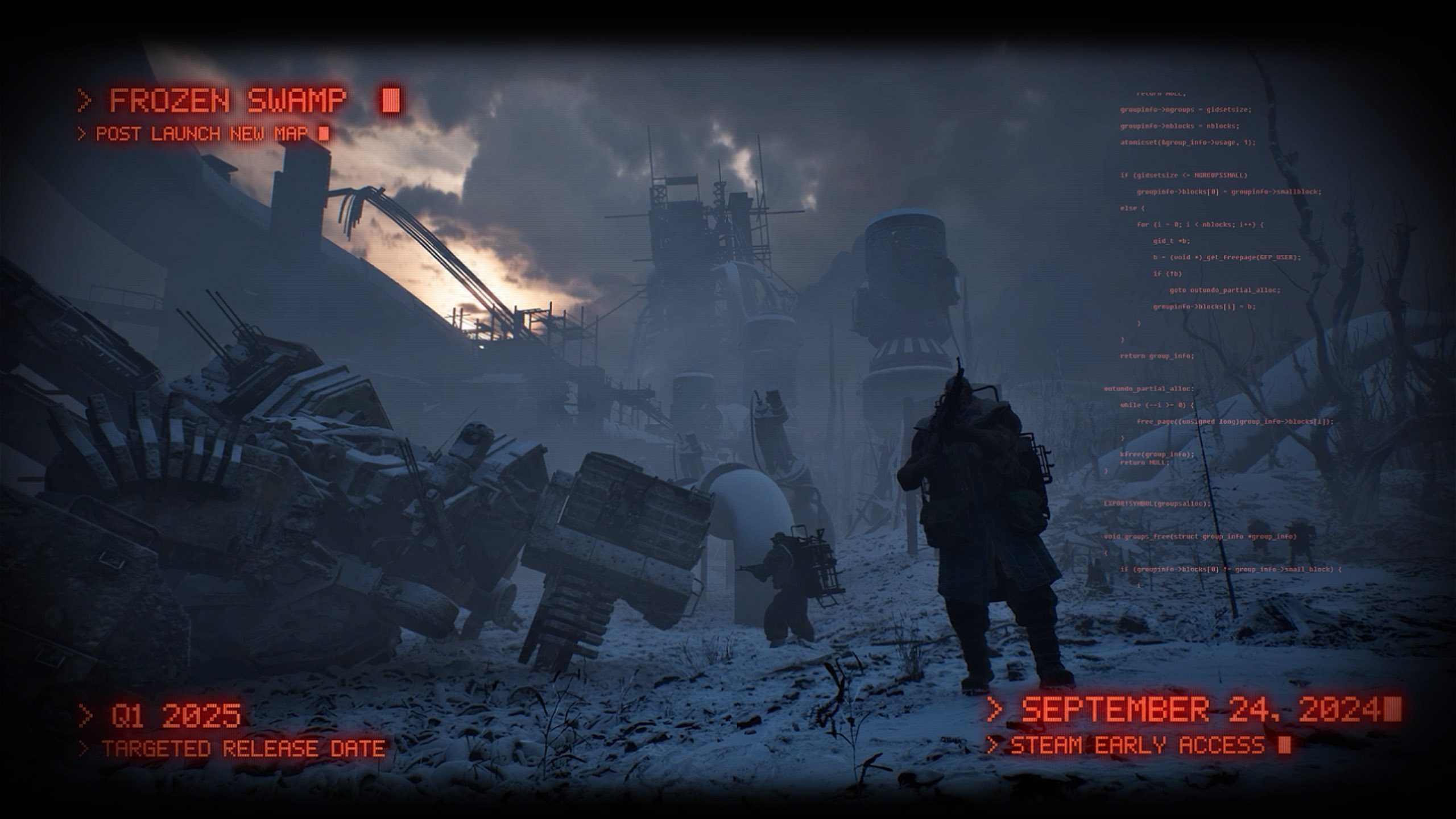
Ahead of me, Miles Williams, Fun Dog Studios CEO and the game's creative director, leads the way, with Gregg covering the rear. They have set themselves the task of protecting me as we try to scavenge for loot in a devastated but still very active battlefield occupied by two warring armies and countless robotic horrors. We are nobodies. Desperate survivors hoping to fly under the radar. We move cautiously. The battlefield can quickly change—from almost peaceful to catastrophically messy—and, copying my protectors, I quickly learn to call out everything I see. Awareness is even more critical than a loaded gun.
We get to some destroyed fortifications and, out of a cloud of dust and sparks, some more cyborgs appear, crawling in our direction. Williams plans to take them out using a suppressor, but they clock us. Symbols above them denote if they're investigating or fully hostile, as well as if they're losing interest. These ones are not losing interest. Williams opens fire and I follow suit. They're not too tough, but we've made a racket. A much larger machine, Mother Courage, has taken notice. And reinforcements are coming from behind us.
There's swearing, a bit of panic, and a lot of running. Williams thinks we're safe, but then a bomber appears overhead and we're separated from Gregg. "Don't wait for me," he says. "Don't wait for me," he repeats. We continue running. Another moment of safety, and room to breathe. Gregg manages to catch up, but we quickly encounter more crawlers. Williams fires at a cyborg—one still in possession of its legs—in the other direction, the screen lights up with alerts and all hell breaks loose.
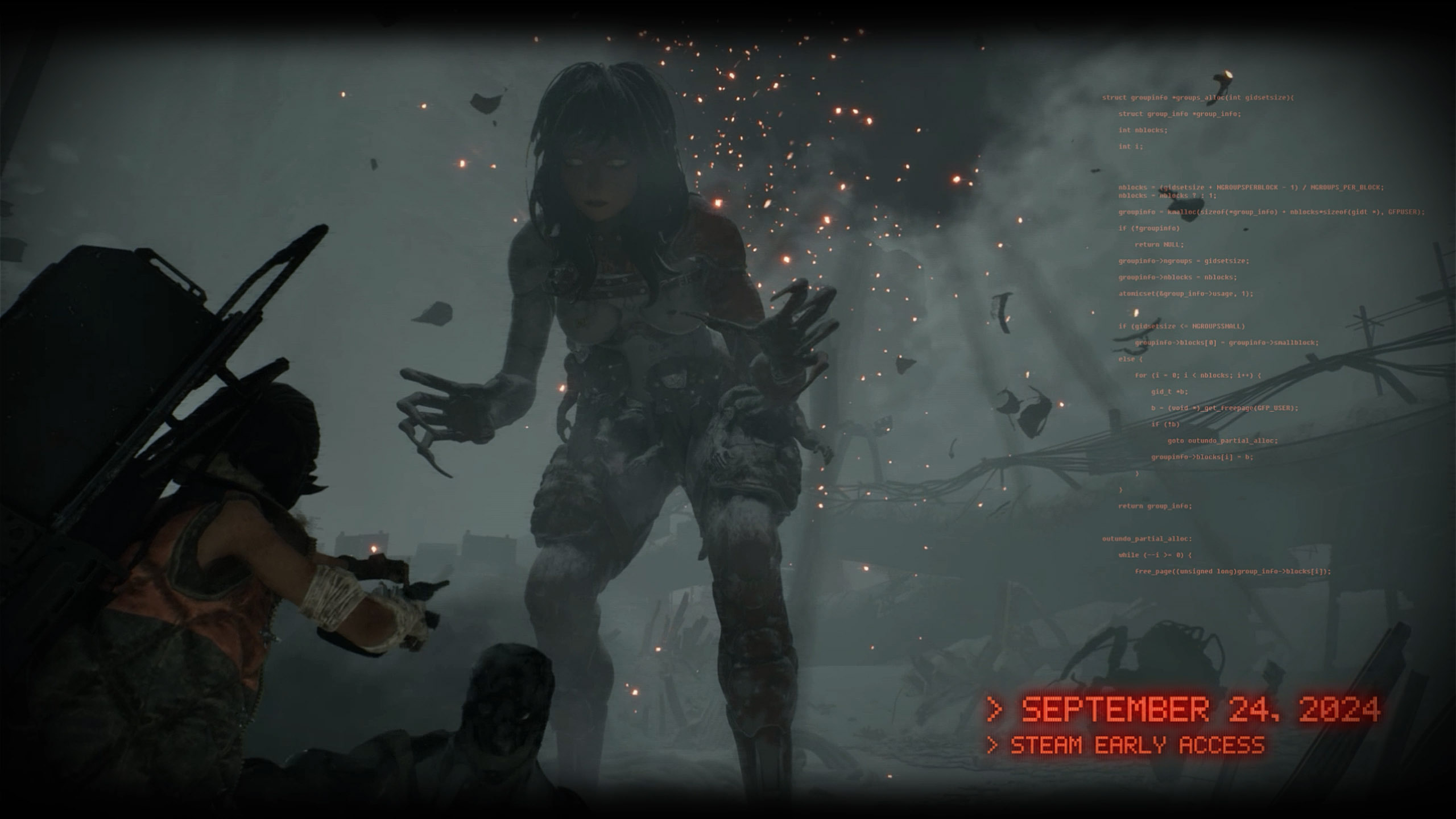
Machine bait
I run for my life as Gregg creates as much noise as possible to draw the cyborgs away from me, but there are so many of them now. A group of them starts sprinting, easily overtaking me to chase down Williams who's out in front. I'm surrounded now, being pummelled by synthetic warriors who look like mechanical zombies. Only a few metres from the extraction point, we die an inglorious death.
By the usual co-op shooter standards, The Forever Winter is brutal. Vastly outnumbered and outgunned, every run is a huge risk for the survivors. I end up back in the Innards—the hub area where the scavengers, or scavs, can trade, prepare and team up—with an empty inventory. The guns I brought with me are gone, as is the precious scanner. To stop things from getting too hopeless, you'll always have access to some basic guns and some free ammo, but you can lose absolutely everything else. You do, at least, get one opportunity to reclaim everything dropped upon death, by returning to the map and trying to reach the site of your demise.
I've got other things to worry about, though. Getting new equipment—a wide range of guns, attachments, ammo and consumables, as well as more exotic fare like mechanical pack mules and turrets—relies not only on the wealth I earn from trading loot, but also my reputation with the factions. Their stock and how much I can make from our transactions, as well as how much I have to pay, is determined by how much they like me. This relationship is affected by missions, and the actions I take during those missions, and favouring one faction will cost me the favour of the other.
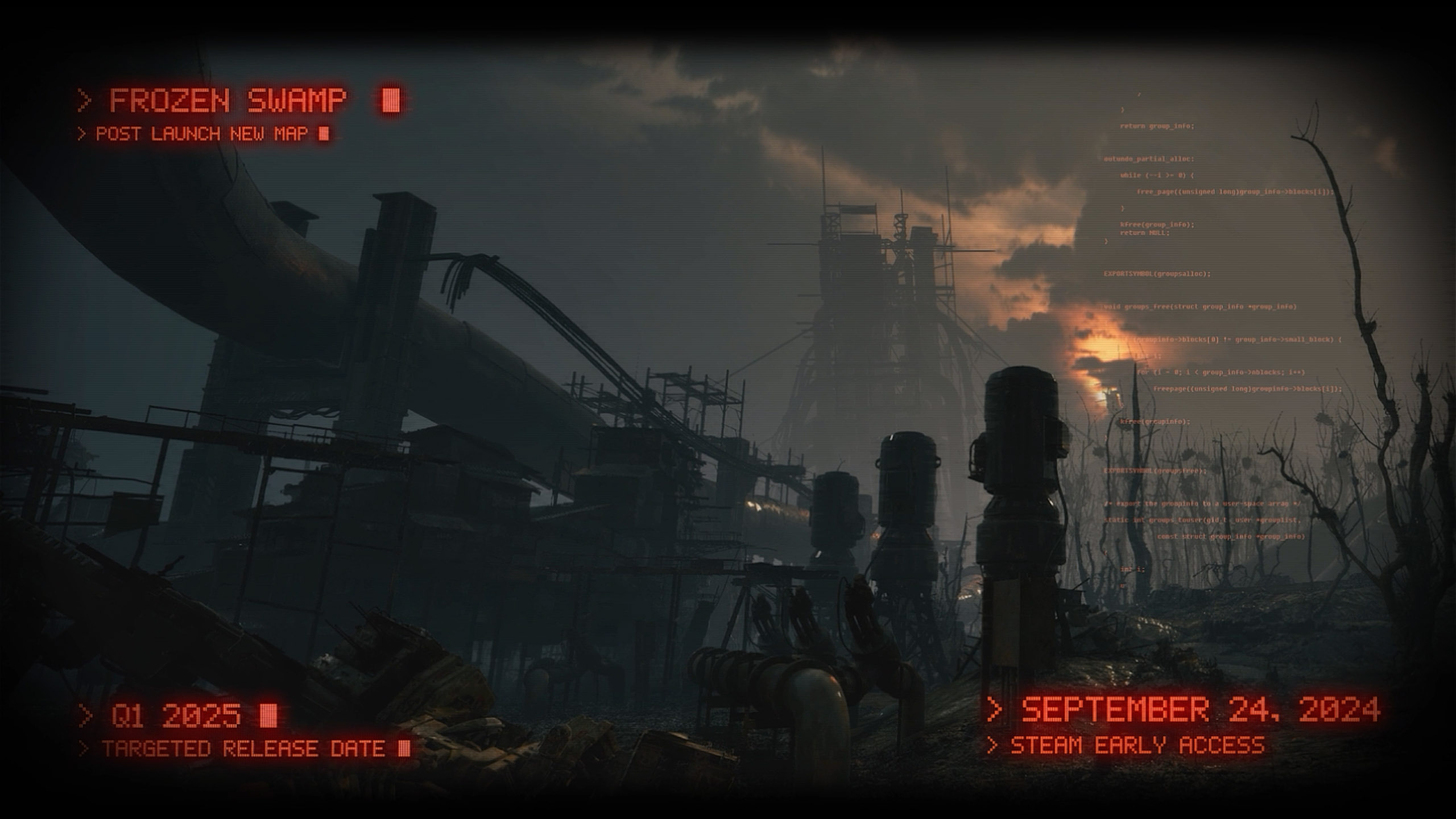
Then there's the water situation. This is the most essential resource, and when my hub runs out completely the area is reset, costing all of the practical and cosmetic enhancements I've made, and my inventory will be gutted. Even before then, when it's critically low, some services become unavailable. And this all happens in real-time.
"One of the things that actually came up in our beta, that we're keeping, is that the water level has real-time degradation," says Gregg. "If you and I log off with 10 days left and you come back three days from now, you'll have seven days left, even if you haven't played. It's a hardcore game, you can build up a large surplus, but that is actually part of our co-op: to make sure people help each other."
Players can share water and other supplies to help the less fortunate out, but otherwise it seems harsh, even if good players are able to fill their water level quickly. If I go on holiday for a week, I don't want my base to revert back to its most basic form and lose everything. But it's also very much in keeping with the stress-inducing desperation that the game is constantly trying to evoke. And I should note that you keep things like character progression: all the skills you've earned from XP. So you never have to start completely fresh.
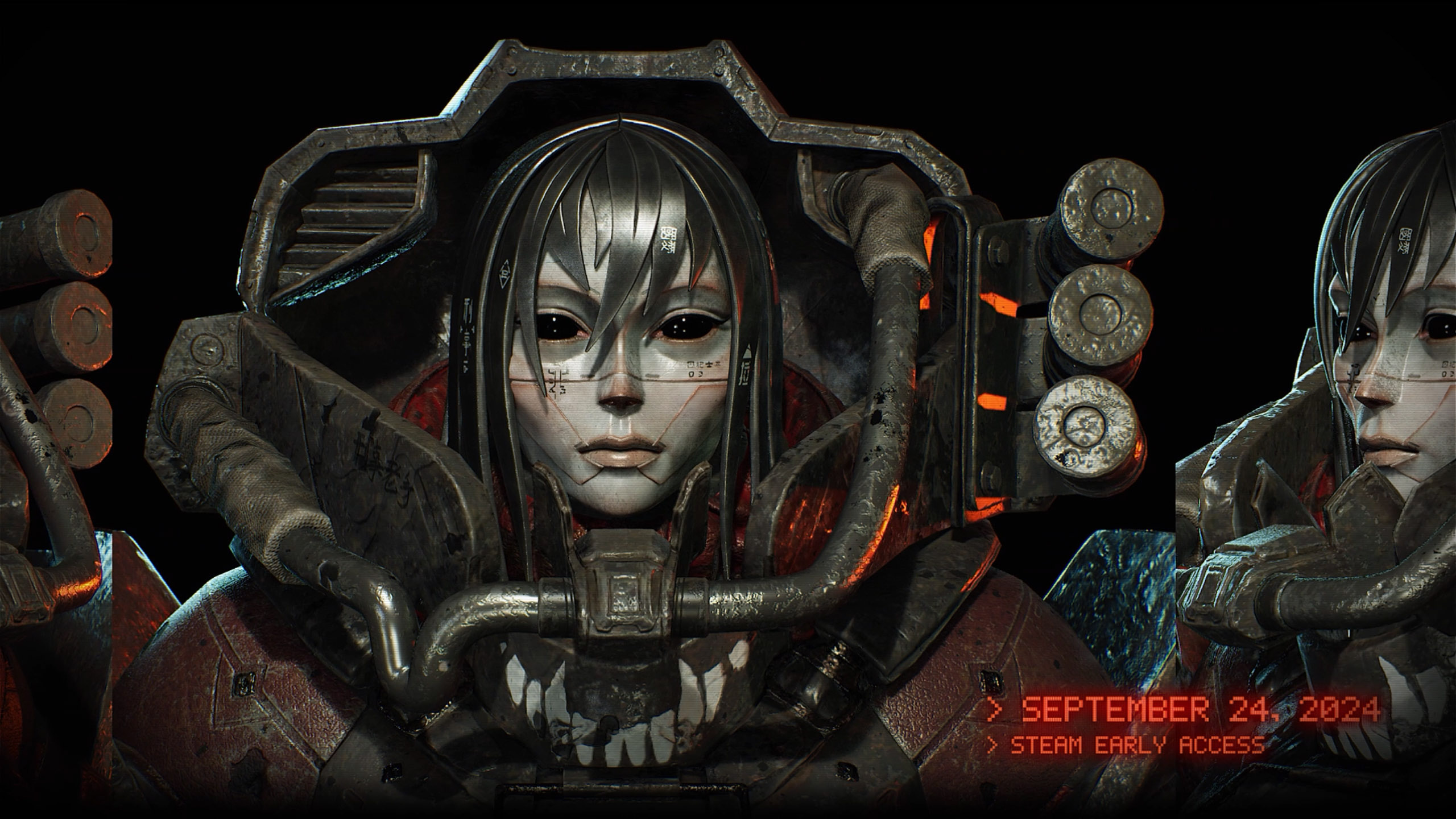
Friendly fire is also active, which is a bold choice for a strictly co-op game, but one we've seen work very well before, most recently in Helldivers 2. Here, it forces you to be even more cautious when firing off some rounds, but it's also led to unexpected emergent player behaviour during the beta.
"If it's a low drop rate enemy, and everyone worked together to take it, we've seen players turn on each other and kill each other because they wanted the loot from that drop," Williams recalls. "It's the antithesis of what we intended, but we've literally seen friendlies gun each other down to get these rare parts, and then take those rare parts and fucking extract. It's brutal."
Seeing this happen inspired the team to put an in-game penalty in place to discourage people from doing this too often, even if it makes for exciting moments. This sort of treachery tanks your scav rating, with the survivors losing faith in you. Gregg says "it's a choice you can make", and Fun Dog doesn't want to stop players from doing something that actually matches the game's desperate tone, but it wants to make it a difficult choice. Betrayal shouldn't be without consequences.
Corpse run
Since Gregg and Williams are babysitting me, I try to avoid shooting at them. I mostly succeed, though I do accidentally clip Gregg during a particularly heated firefight when I'm surprised by a crawler. When you've got a horde of enemies running at you, it's easy for something crawling on the ground to sneak up on you. My gun goes off, and Gregg takes a bullet. I apologise profusely.
Our attempt to get our lost gear back goes badly, but not straight away. The dynamic nature of the battlefield starts in our favour this time. The machines and human soldiers are locked in an infinite war and carry out objectives while players scrounge in the detritus of human civilisation. Most of the time, you're beneath their notice. So you might be able to sneak through the battlefield without drawing any attention to yourself. Thus, I'm able to fill my rig—a customisable backpack that can be swapped out for more advanced versions—with all sorts of tat. Whisky, toys, dossiers, scrap—everything I can find.
The act of looting itself involves some decision making. When you select a crate or a fallen foe, it takes a few seconds for its entire inventory to be revealed, simulating the time it takes to rifle around for the good stuff. You can just loot everything in one go, but that will quickly fill up your rig with junk, necessitating a bunch of inventory management, during which you might get a bullet to the head.
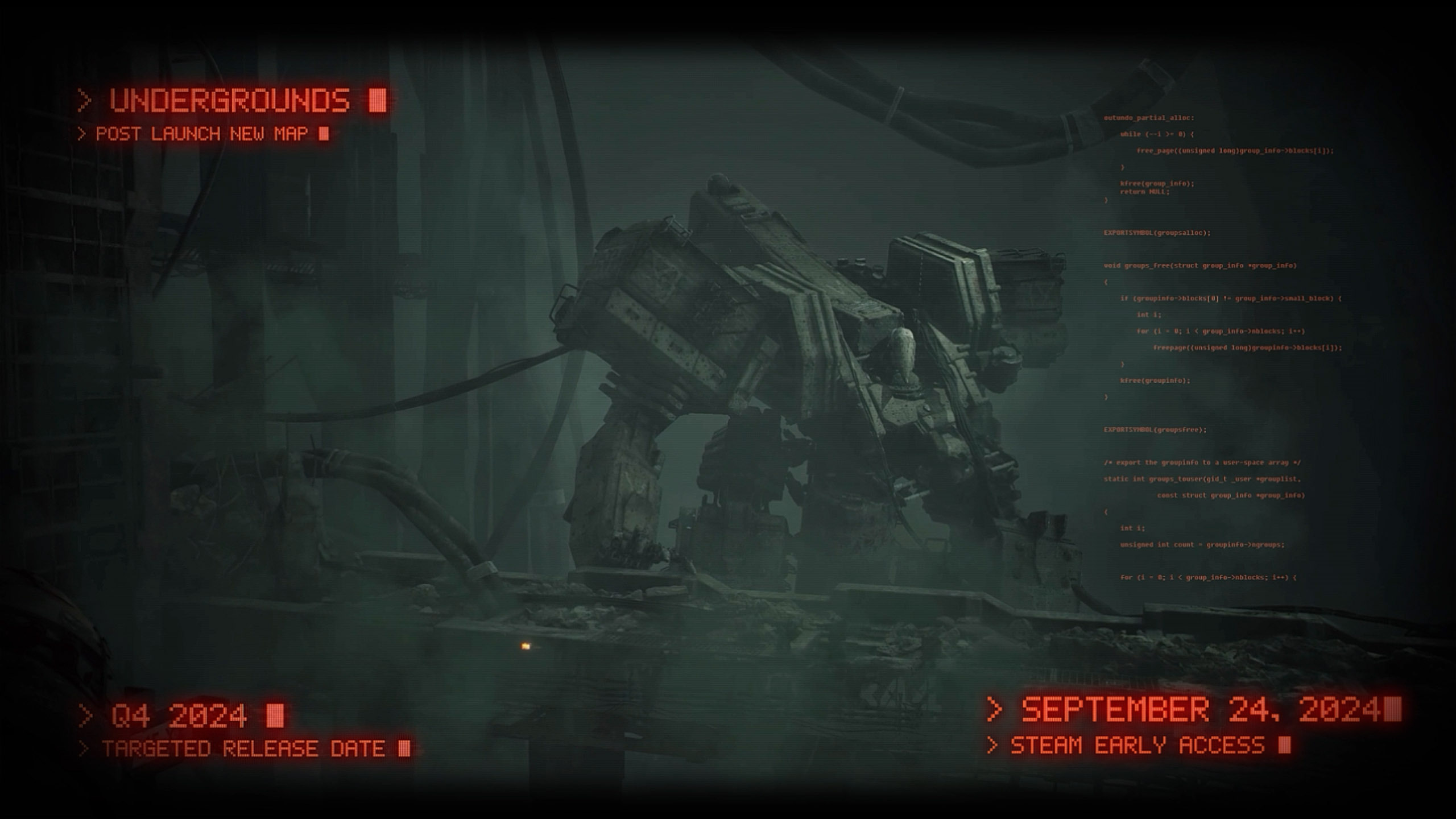
After filling our rigs and outrunning some cyborgs, we make it to the site of our earlier deaths. It's quiet. I pick up my dropped loot, look up, and then I see it: a massive mech bristling with guns. At first it's entirely motionless and I wonder if it's a wreck. It is not a wreck. "Oh shit, oh shit," Williams yells. We leg it as fast as we can. Alerts go off in every direction, but we're close to the extraction point—we just need to make it inside a pipe. Williams gets in first, just as Gregg warns him that "there's stuff in the pipe". All I hear is "Jesus Christ!" before Williams is toast. I soon follow him, and Gregg, now out of ammo, joins us seconds later.
We decide to try our luck on another map. In total I get to see three of them, each distinct but oozing with nightmarish post-apocalyptic vibes. Ruined cities with pillars of corpses and huge machines looming over them. Gore-filled trenches evoking a horrifying sci-fi vision of World War I. A desert where mobile factories slowly coast through the sand. The future sections of the Terminator series are obviously a big inspiration, but there's an unnerving, monstrous beauty to some of the scenes.
"If you mixed Action Force with nightmare fuel and Miyazaki, that's kinda our jam" says Williams, as we encounter a particularly striking vista. I don't have time to take in the impressive view, though, because we clock a bunch of human soldiers firing on some cyborgs right below us. Then we notice a tank engagement happening to our right and smartly run to the cover of a shanty town ahead of us. Nowhere is truly safe in The Forever Winter, though. We narrowly avoid being spotted by a floating drone, which is then taken out by another enemy. Then we bump into a big squad of cyborgs barrelling down some stairs balanced precariously on a cliffside, kicking off an extremely hectic close-quarters brawl.
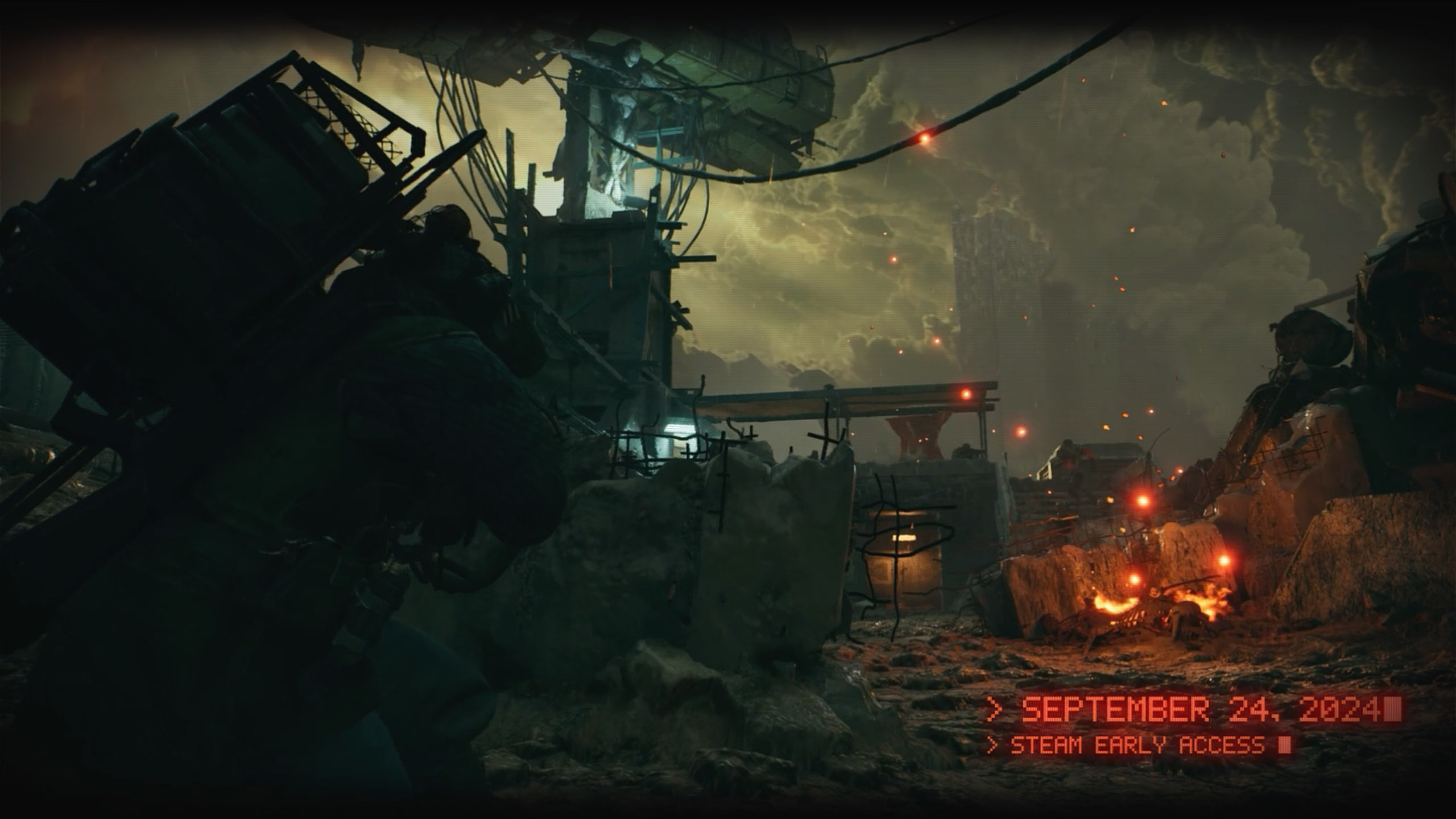
We survive the chaotic battle and get a nice haul after looting the machine corpses. But we're in trouble now. We've made ourselves a big target with all that noise, and now we have to run across an open area, and then along a huge makeshift bridge, before we can get to the extraction point. We sprint as fast as we can, but Gregg, with his massive and very full rig, is struggling to keep up with us. We can't stop, though. Even though we've put a lot of distance between us and our foes, mech snipers have a lot of range. I go down, but Williams heals me before I'm knocked out for good. On the other side of the bridge there are more cyborgs waiting, but we fight through them and all three of us make it to the extraction.
Those hairy final moments were my fault. As a treat, I used the debug menu to give myself a huge stack of cash, with which I purchased a massive anti-tank gun. This put a target on all of our backs. "It's because you were using that damn anti-tank rifle," Williams explains as we laugh about our incredibly close call. "So the way that their aggro is set up is like the bigger the artillery we bring in, the more interest the enemies take in us." And they were very interested.
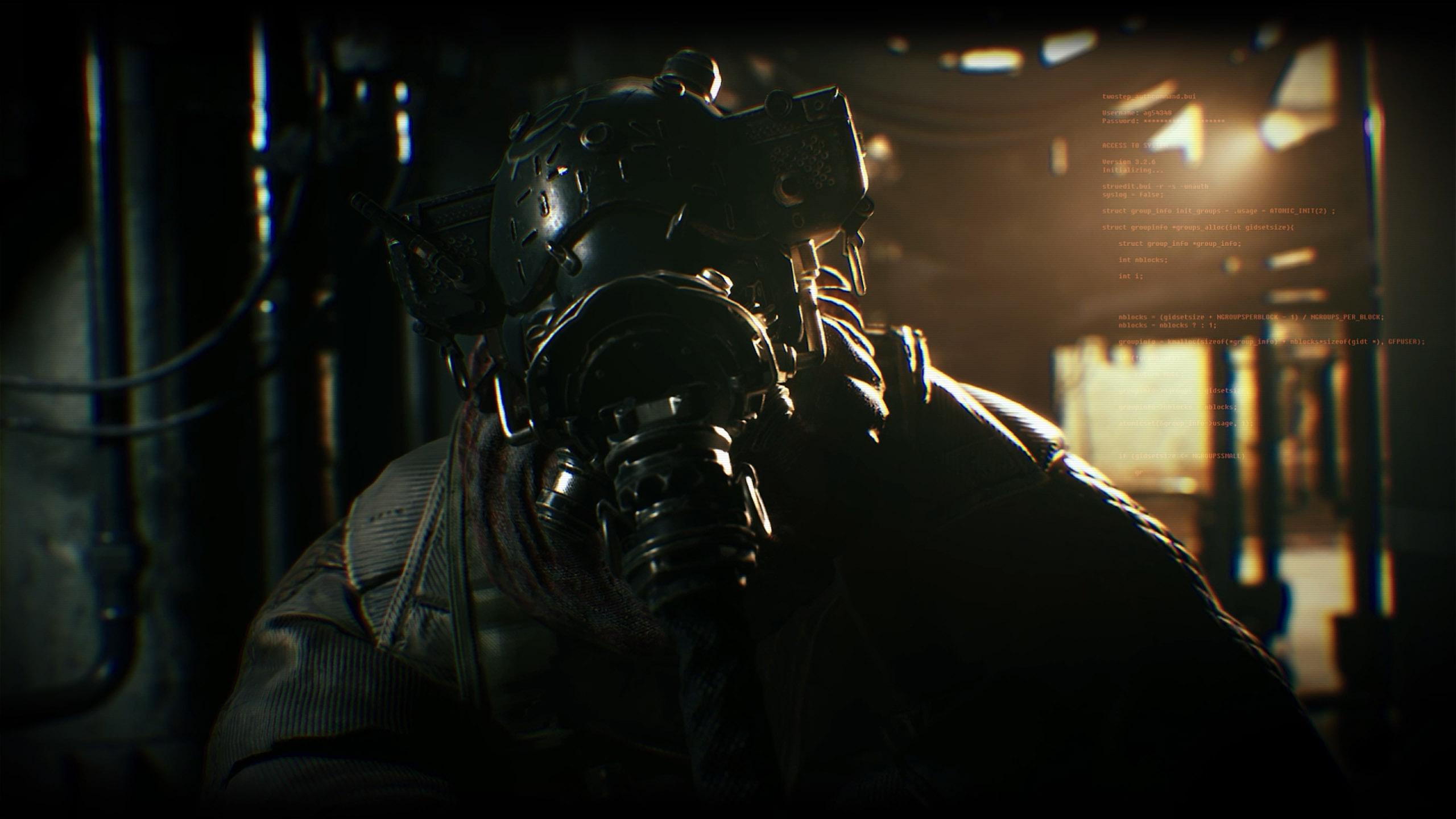
One thing I found myself really appreciating was, despite being a game that feels like it would require a lot of time investment, the actual missions can go by very quickly. We played four, and they averaged about 10-minutes long. Now, this was our call. We weren't completing any objectives, so we were just scavenging loot and then running to the extraction point. But those four missions, two of which I extracted from, gave me enough XP to level up twice. And I came back with countless anecdotes and horror stories.
This playthrough really just scratched the surface. In May, I spoke with Williams about The Forever Winter's dynamic war and what Fun Dog has in store for us: the way missions have consequences, changing both how your fellow survivors perceive you and how the warring armies react; the boss-like fights against machines that have reactive armour and stealth systems; the epic clashes between the AI factions—there's a lot more that I want to see. And I'll be able to soon, because The Forever Winter is hitting early access on September 24.







